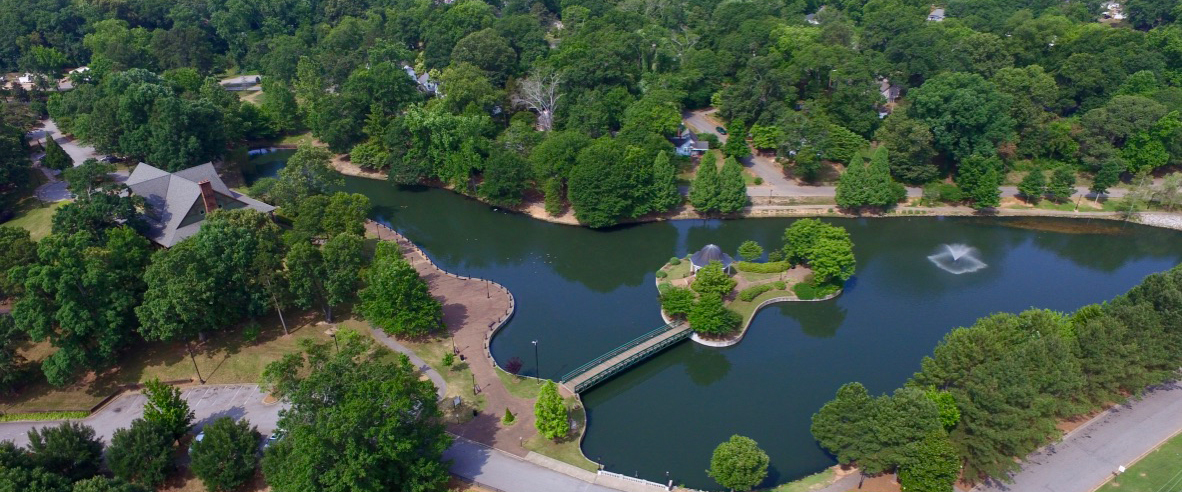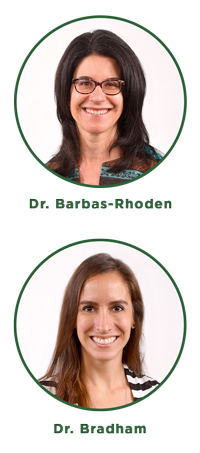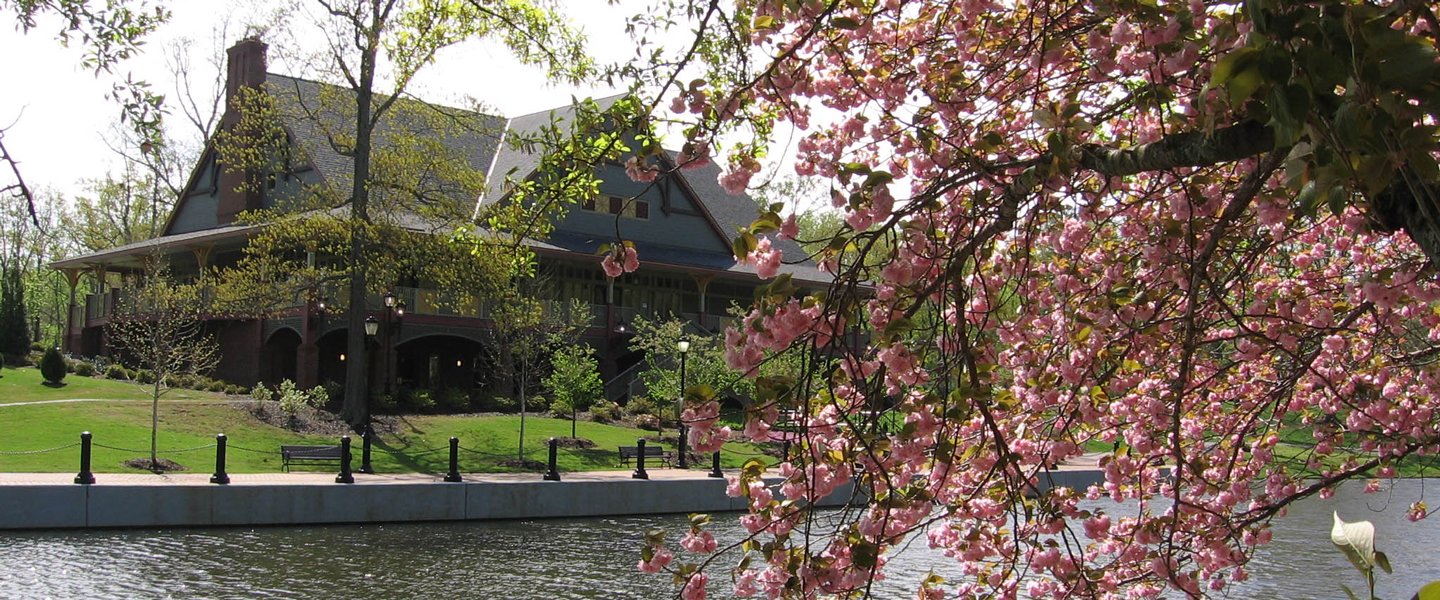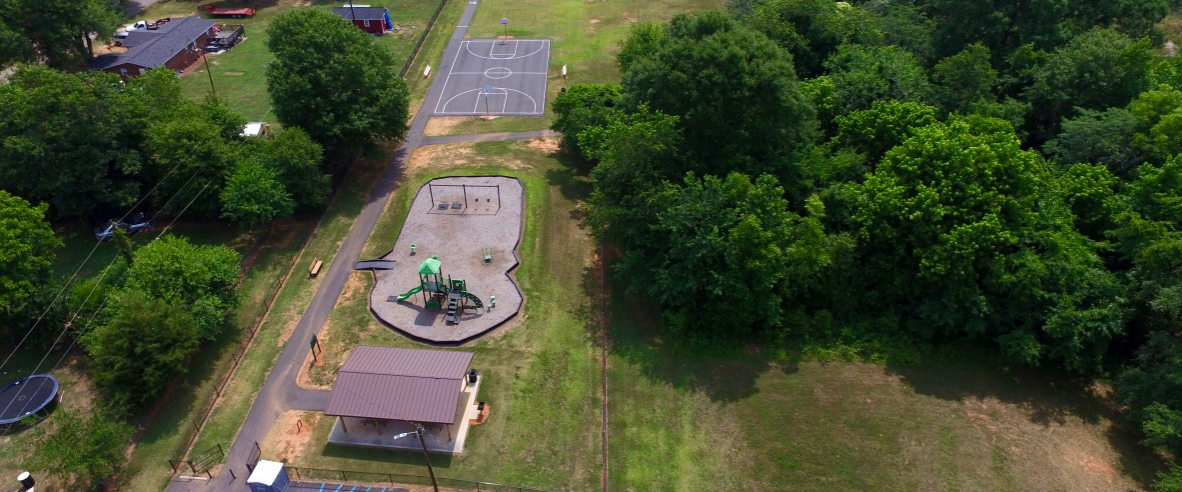apply for the winter 2026 citizens planning academy!
The Citizens Planning Academy is returning early in the new year with a new schedule. Learn more and apply today!

Wofford researchers analyze equitable access to greenspace in Spartanburg
 The benefits of safe and convenient access to parks and natural areas are well documented. Urban parks have a positive impact on not only physical health but mental health, as well as the health and vibrancy of communities as a whole. But the reality is that accessible greenspaces are not a privilege available to all, particularly communities of color and those historically and systemically underserved.
The benefits of safe and convenient access to parks and natural areas are well documented. Urban parks have a positive impact on not only physical health but mental health, as well as the health and vibrancy of communities as a whole. But the reality is that accessible greenspaces are not a privilege available to all, particularly communities of color and those historically and systemically underserved.
Wofford College professors Drs. Laura Barbas-Rhoden and Jen Bradham — joined by student fellows and community context experts — recently set out to evaluate the quality, location, and common uses of greenspaces within various Spartanburg communities, with a particular focus on the prevalence of high quality parks in areas with higher concentrations of Hispanic and Black, Indigenous, and people of color (BIPOC) residents. They layered maps, census information, and cell phone data, coupled with direct qualitative feedback from community members, to capture the full picture of greenspace equity in the City and County of Spartanburg — and shared their preliminary findings in a conversation with Upstate Forever.
Why are inclusive green spaces so important?
Dr. Jen Bradham (JB): Studies have shown the presence and use of urban green spaces promote a wealth of health benefits, including decreased rates of stress, as well as lower blood pressure and cholesterol rates. The ongoing pandemic has also brought to light just how valuable green spaces are, as they have provided a means through which friends and family can gather during a time when social distancing and fresh air circulation are critical.
Dr. Laura Barbas-Rhoden (LBR): From a personal angle, I've experienced my parents’ caring relationship with places, like their own garden and local and state parks as something beautiful and sustaining for our family. My father is an immigrant, and some complex geopolitics separated him and his siblings from lands that were in our family’s care for generations. So it's always been clear to me how deep our connections to place can be, and how they can be both ruptured and nurtured.
How did your academic backgrounds influence your decision to work on this greenspace equity study?
LBR: My work in public research has drawn upon my proficiency in Spanish and familiarity with cultural contexts in Central America and Mexico. This background helps me conduct inclusive qualitative research locally.
JB: I am a quantitative ecologist primarily working in Central and South America. I research how large, tropical mammals interact with the landscape, and how those interactions may be modified with anthropogenic climate change and land use change. Unfortunately, since COVID hit, I haven't been able to go back to South America, so I transitioned to conducting more local research.
How did you decide to embark on this project?
JB: Laura brought me into Alianza Spartanburg [a social impact network comprised of collaborators that work to facilitate, encourage, and promote the inclusion of members of the Latinx community in improving quality of life in Spartanburg County], where I was able to become more involved with what was happening in our community. From this group and regular conversations with Laura, it became apparent that there may be discrepancies in access to greenspace in Spartanburg County and the way people utilize those areas. So we set out to evaluate just that.
LBR: Jen and I share a common interest in intersectional approaches to social and environmental challenges. The 2019 study took a specific interest in inclusive placemaking with a focus on amplifying voices of Latinx residents of Spartanburg. We chose that emphasis because Latinx residents represent a significant and growing population in the county, and yet their representation in places of institutional decision making is not yet proportionate to their percentage of the population. The moment felt right to pull together a team to further local work by gathering high quality data and thinking about it together with community context experts who are advocates in and from Black and Latinx communities.
So you took both a qualitative and quantitative approach. Has this been done before with this subject?
JB: There was no research to date evaluating green space equity and access through a complementary, interdisciplinary lens that incorporates both qualitative and quantitative data. Yet, we have found through our research that if you want to tell the whole story, you really have to have both of these types of data. I'm the numbers side, and Laura makes those numbers human.

How did you each conduct your research?
LBR: We conducted 29 observations in June and July of parks located in the City and County. These were neighborhood parks, destination parks, and one “not park.” We also talked with neighborhood, grassroots, community leaders and people in parks who agreed to an interview — basically understanding people's perceptions and experiences as they share them in their own words. We then analyzed the qualitative data for emergent themes such as safety, connectivity, usage, amenities, and so forth.
JB: While Laura’s team collected qualitative data, my team focused on quantitative data. My team assessed location and size of the parks, how much land is dedicated to green space in a zip code or in a census tract, and the quality of those green spaces. Just because the greenspace is there doesn’t mean it's high quality.
We also looked at use of those greenspaces. We have cell phone data that tells us the degree to which people are using the greenspace — when and how often they are going.
Did your study yield any compelling results?
JB: Collectively, we found some pretty interesting patterns. For example, census tracts that have the highest percentage of people who identify as Hispanic are areas within the urban footprint that are completely devoid of public greenspace. So it's interesting to kind of tease out some of these patterns, and we're hopeful that this research can help direct green space development to be more equitable for these areas. It’s pretty evident that there are some serious park deserts outside of the urban footprint in the county.
LBR: Plus, some of the parks in the urban footprint are not necessarily accessible by infrastructure people would use. The only park in a census tract with a large Hispanic population is particularly low quality, and not only that, there's a lot of old rail infrastructure in the area. Navigating that in a car is really difficult. Navigating on foot, which I had a previous research team do, is nearly impossible. You have to walk on the shoulder, and there's a lot of overgrown grass. That research team actually came back with ticks!
JB: Something kind of cool that we've seen, as someone who comes from a complete numbers side, is the power of putting numbers and stories together.
For example, Arkwright Park is a new park, and we saw basically no use from the cell phone data. But Laura's team was actually able to go to the park and interview people there and discern that it actually gets used all the time by kids who are walking there from the neighborhood. So it makes sense it wouldn't register cell phone wise, but that park is being heavily used. We'd never have known that without both types of data. That's a really powerful tool for understanding how greenspaces are used and why they're important. That's leading to other things that we want to investigate in the future.

How will you present your findings, and what kind of impacts would you like to see from your research?
JB: The data is from the community, and we believe it belongs in the hands of the community. We make our research available Open Access on the Wofford Digital Commons, where the reports are available for free, in perpetuity, for anyone who would like them, at any time. Our students will present in academic venues, and we welcome invitations to speak with organizations, elected officials, and grassroots organizers. We're excited to see how others share the data with those in their networks.
LBR: This study provides a way to assess our existing parks, and determine what is needed for the future. Land and water and air give us our lives, and finding ways to co-create healthful futures, collectively and equitably, is an imperative. We’re each going to engage with this work in ways that resonate with our own lives and histories, and our efforts will deepen as we find ways to be in dialogue and relationship with one another. For each action we take, we want to be living into the future we'd like to see.
Drs. Barbas-Rhoden and Bradham would like to thank student researchers Emily Arnold, Kayla Chávez, Paola Cruz, Marlen Ramírez-Alvarado, Drew Wilson, and Wade Wood; community context experts Nora Curiel-Muñoz, Angelia Edwards, Toni Sutton; and all who shared insights and data for this study.
